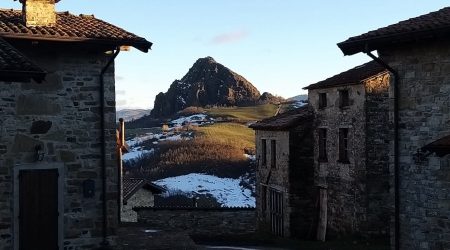South of Bismantova near the bed of the Secchia, between the mountains Rosso, Carù, Merlo, La Pianellina and Pradale, you can admire spectacular outcrops of Triassic chalk (they are among the oldest rocks in the Apennines, over 200 million years old with cavities, sinkholes, sinkholes, crystals of all shapes and sizes.
The Triassic Gypsum area is located in the upper Val Secchia on the border between the municipalities of Busana, Castelnovo ne’ Monti and Villa Minozzo.
The naturalistic and landscape value of the area is high, in particular for the presence of ancient rocks (the period called Trias dates back to 200 million years ago) and for the examples of karst morphology.
The particular naturalistic richness is completed by the presence of the river Secchia and the woods that partly cover the slopes of the surrounding hills.
A careful observation also does not escape the numerous traces of the relationship between man and the territory: chestnut groves, mills, metati, examples of local architecture, cultivated fields and small vineyards.
Excursions:
the visit starts from the Ponte del Pianello, from which you descend along the riverbed, in the heart of the Valle dei Gessi.
From here you enter the woods, where you can discover the characteristics of the flora and vegetation, and visit an old metato, a building in the past used for drying chestnuts.
Resumed the journey you reach the entrance of a karst cavity, the Tanone Grande della Gacciolina, one of the most important caves in the area.
The excursion continues with the ascent to the village of Sologno, the visit can end here, with a short walk in the most suggestive part of the country, or continue with the climb to Monte-Pianellina (851 m), from whose top you can enjoy a wide view of the valley.
From the mountain you finally descend to the Fonti di Poiano, abundant springs known for their “saline” waters (sodium calcium sulphate-carbonate).








